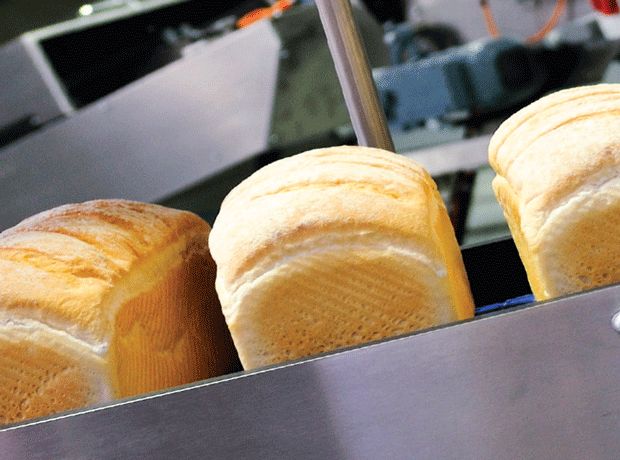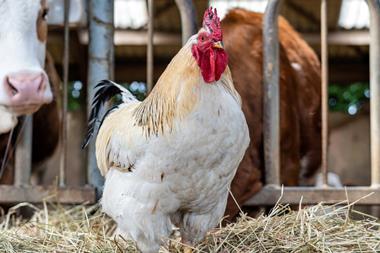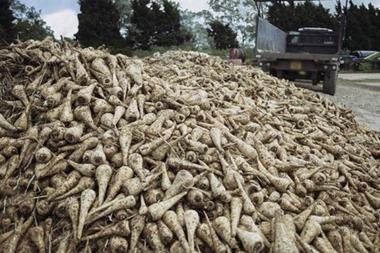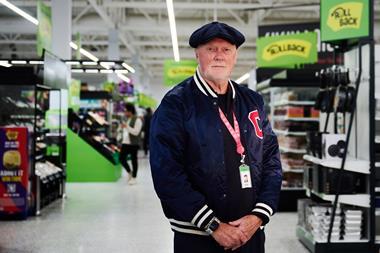Mass-scale manufacturing may not be cute, but with state-of-the-art equipment, Britain’s food and drink suppliers have a lot to shout about
It’s easy to lick your lips at the sight of a hand-crimped Cornish pasty or a dainty cupcake lovingly iced by a local baker. The alluring combination of homemade appearance and authentic taste means artisan products take well-deserved plaudits.
But all too often our love affair with small food producers goes hand-in-hand with disdain for products not for the chosen few but for the mass market.
It shouldn’t be this way. Britain’s food manufacturers are investing millions of pounds in market-leading technology to produce high-quality, affordable food for mainstream consumers, and - with 400,000 Brits now employed in food manufacturing - they are important creators of jobs and significant contributors to UK plc.
Bread maker Warburtons is leading the charge, investing more than £400m in its manufacturing facilities over the past decade. And it hasn’t reined in spending either. In the past 12 months alone it has rebuilt, from the ground up, its original bakery in Bolton, at a cost of £40m, as well as opening a dedicated gluten-free bakery at Newburn, two new wraps and thins operations (in Bolton and now Bristol), a snacks plant for its baked Pitta chips (also in Bolton) and a new crumpet facility in Enfield.
“We have a lot to look forward to,” says Warburtons chairman Jonathan Warburton. “We’ve got to really get behind our brands. If we can put our hands deeply into our pockets, as we come out of the recession, our view is we’ll come out ahead. And I don’t mean giving the stuff away on promotion.”
With the chancellor, George Osborne, visiting the new Bolton plant earlier this month, it seems the industry’s attempts to shout about its success stories are starting to be recognised. Yet all too often investments, and the feats of technological prowess they achieve, are unpromoted and unrecognised. “That’s because
we’ve been preconditioned to think manufacturing is boring and dull,” says Warburton. “In fact, it’s anything but, particularly as the country is looking to manufacturing to take a lead in our recovery.”
So, just what are the UK’s leading food and drink companies doing on their factory floors to stay at the cutting edge and make mass-produced food exciting? How are they meeting the challenges of rising raw material prices? And is the government doing enough to help?
Since Jethro Tull invented a mechanical seeder in 1701, momentum behind automation has continued to grow. But the advances in recent years are particularly significant, with massive productivity gains in materials handling coinciding with a reduction in the cost of automation in some areas. Some manufacturers are even taking inspiration from other high-tech industries to take their food production to the next level. Last year, leading meat packer Hilton Food Group installed automated guided vehicles - a technology taken from the automotive industry - in its factory in Denmark, and is currently considering rolling out the technology to its UK operations (see box, p53).
While the cost of robotics automation has come down significantly (“partly due to the decline in manufacturing as a whole, which has forced suppliers to look farther afield,” says Hilton CEO Sir Robert Watson), their usage is still limited to large manufacturers at the moment. But Gary Frank, CEO of cake and muffin maker Fabulous Bakin Boys is convinced that, as modern-day robots become ever more flexible and cost-effective, even smaller companies will soon be able to invest in automation.
“When we started 20 years ago, we used to make muffins with ice cream scoops,” he recalls. “You couldn’t have been any less automated than we were.” Fast forward to 2012, and FBB has just splashed out £3m on a bespoke automated line that can mix, bake, wrap, pack and stack 65,000 muffins, flapjacks and cupcakes an hour. It’s a steep investment for a company that turns over £20m a year, but paying top dollar for cutting-edge technology is what it takes for FBB to stay ahead of its rivals, Frank believes.
Robotic cows
Gleaming new robots are even shining through on the farm. “More farmers are starting to use robotic milking machines,” says Rich Clothier, MD of Somerset cheese maker Wyke Farms, which had a turnover of about £65m in 2011. “That means the cow walks into a cubicle, where a highly intelligent robot senses where the teats are, and attaches clusters to them and starts milking. The cows are quite happy with that, too: they can walk in and be milked when it suits them.”
And while the likes of Robert Wiseman’s Bridgwater plant are rightly recognised as state-of-the art, Wyke Farms itself is also unrecognisable from the company founded 110 years ago. “My grandmother used to make all the cheese herself in a bath in the kitchen, whereas we have just spent £2.5m on robots, which has tripled our production to 12,000 tonnes a year,” says Clothier.
With the economy in the doldrums, and many raw material prices still soaring, rationalising production processes and making factory-floor operations as lean as possible is clearly a driving force in a lot of capex.
When it comes to perishable products, automation also means suppliers can react far more quickly to supermarket orders. “We get orders in the morning that need to go that afternoon,” says Pork Farms head of marketing Andy Napthine. “Automation and robotics take out costs but the line also improves our speed.”
Innovation is also being driven by the health agenda. Salt, sugar and butter - the key weapons in any chef’s armoury - are under sustained attack from a determined health lobby, which is driving manufacturers to reformulate foods to meet health guidelines. Mars says it took five years, €10m and more than 40,000 R&D hours to produce a Mars bar that contained 45% less satfat per 100g than other leading chocolate bars.
But savoury products often miss salt and butter even more than sweets, and manufacturers are spending more than ever on R&D as they experiment with different combinations of ingredients to ensure their products meet new health targets - and remain attractive to consumers.
The R&D teams at Britain’s leading manufacturers are also tasked with keeping products exciting and appealing to increasingly demanding consumers. “Food is changing like fashion,” says Napthine. “Understanding where consumers are, where they have been and where they are going is critical.”
Changing consumer trends are clear to see in the products Pork Farms has sold over the years. Whereas 15 years ago, the market revolved around large, sliced pies, smaller snack formats have become more popular recently, and mini pork pies now account for 40% of the total pork pie market, he says.
Keeping up with new consumer trends was also a key factor for some of Warburtons’ more recent investments, says Warburton.
“After years of investment to deliver nationwide coverage, there comes a point where you don’t need any more bakeries. But our Squarish Wraps and Sandwich Thins, for example, have been developed to meet consumer demand for a lighter, less filling option.” With a second wraps and thins line introduced in Bristol this year, at a cost of £8m, on the back of early success, the investment has also been configured with flexibility in mind, he adds. “The front end is twice as big as it needs to be to make one product, but that means we can make other laminated products, such as croissants or brioche, as consumer tastes demand.”
Cross-industry collaboration has also opened up the door for manufacturers to refresh their product ranges. In Pork Farms’ case, this has led to partnerships with Branston pickle to produce a pickle-topped pork pie, and a recent collaboration with Noble Foods to deliver The Happy Egg Co-branded quiches and Scotch eggs. Leveraging expertise from different parts of the food industry to produce new products is a natural step for food manufacturers, believes Napthine. “People want us to be adventurous,” he says.
Another challenge is the sustainability agenda. Late last year, Coca-Cola Enterprises announced a £50m investment across three of its UK sites, including £30m in a new automated warehouse at Wakefield. Already the largest and most environmentally efficient bottling plant in Europe (zero waste has been sent to landfill since 2009), the new facility will more than double storage capacity, resulting in deliveries direct to its customers (rather than via external warehouses), saving 500,00 road miles per year. CCE is also investing in a new energy-efficient bottle blowing facility at East Kilbride that will produce lightweight PET bottles and a canning line at Sidcup that uses 20% less water.
Signal of confidence
As with the chancellor’s trip to Bolton, CCE’s investment has met with a ringing endorsement from business secretary Vince Cable. “Food and drink is the largest manufacturing sector in the UK, contributing some £20bn [in value added] to the economy, and this is a major signal of confidence in the British economy,” he said at the time.
And the government’s recent launch of a Make it in Great Britain campaign to highlight the best in British manufacturing innovation has, in return, been welcomed by the food and drink industry.
“We don’t hear enough about manufacturing,” says Mandy Cooper, marketing director at Dorset Cereals. “Food manufacturing in the UK is taking place in state-of-the-art factories with spotless white floors and cutting-edge technology. It should not be seen as dull - there are a whole range of jobs involved, all of them essential to the success of a food manufacturer.”
Come See Inside
Her sentiment is echoed by the FDF, which is gearing up to launch a See Inside campaign this summer, designed to give the British public a better insight into modern-day food manufacturing. Under the scheme, food companies will open up their factories to young people to showcase the different careers on offer in food manufacturing - from developing a new range of cereals and taste-testing ice cream to creating an advertising campaign for chocolate.
Highlighting just how wide a variety of jobs are available in food factories has never been more relevant, as the rise of the machines on the factory floor inevitably squeezes out human beings on the production lines. According to the Office of National Statistics, the number of people employed in all manufacturing sectors has shrunk by an average of 125,000 a year over the past 35 years, from 6.6 million in 1978 to 2.5 million in 2012.
At FBB, the £3m investment in Star Wars-style robots allowed the company to cut its factory-floor head-count by a third, from 22 to 15. But Frank points out that although robots have indeed vaporised some jobs, others have been created. A robot might have many qualities, but it doesn’t have a brain, he says. Not yet, anyway.
“What we want to do with our workforce is concentrate on using people in added-value roles, improving the quality of the product rather than for the repetitive work,” he says. “It’s a big-picture synergy between man and machine - the machines can do what they are good at, which is doing one thing over and over again, and we can do what we are good at, which is using our brains.”
This shift from traditional production line work to more highly skilled job is why campaigns such as “See Inside” and “Make it in Great Britain” are so important.
A rougher ride
But some would like more support - especially from the government. Napthine, for instance, suggests UK manufacturers tend to get a rougher ride than EU counterparts, with red tape from Brussels more rigorously enforced in the UK, he claims.
He cites the recent ban on battery cages as an example and is worried the partial sow stall ban, which is due to come in next January, could affect UK producers disproportionately. “Will our European partners face the same stringent inspections?” he asks. “Government should agree with our European partners as to how that will be enforced.”
Others take an even more parochial stance. Zoe Bannister, commercial director at Bannisters Farms, believes clearer food labelling should be used to steer consumers towards British-made products, boosting the UK’s food manufacturing sector. As a British manufacturer proud to use 100% British ingredients, Bannister says she would like to see on-pack provenance information for all ingredients used in processed products, as well as clear manufacturer credentials. That way, consumers can make an informed choice about supporting British manufacturing, she adds.
“Not many consumers know where the parent companies of some of the larger multinational companies reside,” Bannister says. “If consumers are going to help the economy and boost manufacturing in the UK, it needs to be British all the way up the chain, so profits are reinvested in this country.”
Meanwhile, Clothier at Wyke Farms says a government-backed drive towards renewable energy would help manufacturers slash increasingly expensive energy bills. “UK manufacturers are being held hostage by energy companies from the Middle East,” he says. “The government needs to develop a cohesive strategy and sell renewable energy harder - a single one-megawatt wind turbine could power us for a whole year.”
Developing exports markets, too, could help UK food companies thrive and invest in jobs at home, he adds. “We are seeing massive Asian markets start to open up for dairy products,” he says. “There is a really big prize in those regions in terms of exports, but we need the support, we need the contacts and we need government-induced and funded trade shows with translators. It’s a massive market. If we get in there early and work really hard at it, then it could help lift the economy out of the gloom.”
And not even the pickiest foodie would turn their nose up at that.
Topics
Olympic feast

The Games’ head of catering, Jan Matthews, outlines her vision for London 2012.
- 1
- 2
- 3
 Currently
reading
Currently
reading
Best of British: Manufacturing - Fast and fantastic
- 5
- 6






























No comments yet